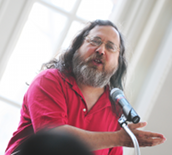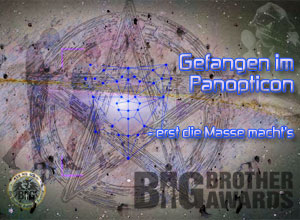

|
search / subscribe / upload / contact |
|
|
||
|
|
||
|
|
||
|
|
||
|
|
||
|
|
||
|
|
||
|
|
||
| RSS-Feed Depeschen | ||

|
||
Date: 1999-11-23
"Semantic Forests" fuer die NSA-.-. --.- -.-. --.- -.-. --.- -.-. --.- -.-. --.- -.-. --.- aufgetrieben, die über große Fortschritte beim Übergang vom Stichwortfiltern zu semantischen Analysen in den Jahren 1996-1998 durch die NSA berichten. -.-. --.- -.-. --.- -.-. --.- -.-. --.- -.-. --.- -.-. --.- -.-. --.- ... The technology, called "Semantic Forests", is a software program that analyses voice transcripts and other documents in order to allow intelligent searching for specific topics. The software could be used to analyse computer-transcribed telephone conversations. It is named for its use of an electronic dictionary to make a weighted "tree" of meanings for each word in a target document. Two US Department of Defense academic papers, published as part of the Text Retrieval Conference (TREC) in 1997 and 1998, provide the first evidence that the US government has actually built a working prototype of this technology and is testing it. The papers reveal that the US military had been honing Semantic Forests over at least two years, from 1996 to 1998, to make it more effective at siphoning off useful information. .. It appears that Semantic Forests is intelligent enough to handle questions given in plain English. One of the sample questions used to test the software was, "What have the effects of the UN sanctions against Iraq been on the Iraqi people, the Iraqi economy, or world oil prices?" The US National Security Agency is also closely associated with Semantic Forests. One of the authors of Semantic Forests, Patrick Shone, was also one of the inventors of an NSA-patented system for eavesdropping on international phone calls, which is similar to Semantic Forests. The NSA applied for the patent, No 5,937,422, seven months before the first Semantic Forest paper was delivered at TREC. However, the patent only became public after winning US Patent Office approval in August this year. .. Cryptographer Julian Assange, who moderates the online Australian discussion forum AUCRYPTO, discovered the department papers while investigating NSA capabilities. "This is not some theoretical exercise. The US has actually built and lab tested this technology, which is clearly aimed at telephone calls. You don't make a wheel like this unless you have something to put it on," he said. US Congressman Bob Barr, who previously served with the CIA, said: "This report underscores the need to update oversight procedures and legal standards designed in the 1970s and not updated since, in light of the revolutionary technological changes of the past two decades. A perfected system to intercept voice communications and allow government agencies to precisely pinpoint conversational topics of interest would create a truly awesome potential for privacy-invading abuses." .. Dr Brian Gladman, the former director of Strategic Electronic Communications at the Ministry of Defence, said the NSA would always like to find better ways to filter "voice traffic" .. "Automation is essential. It is likely the success rate will be low, but this may not be an issue. It is better to deploy something that will allow 10 per cent of the interesting traffic to be found, than doing nothing and finding nothing." .. The two Semantic Forests academic papers came from the speech research branch of the US Department of Defense at Fort Meade, Maryland the location of the headquarters of the NSA. When the 1998 paper was downloaded from the TREC conference Internet site, the name of the file was listed as "nsa-rev.pdf". Bruce Schneier, the author of Applied Cryptography, claims that, paired with other types of spying technology, this software could have a significant impact on people's privacy. "This technology can be combined with voice-recognition technology to automatically find certain conversations by a particular person or ethnic group," he said. Full Story http://www.independent.co.uk/news/Digital/Features/spies221199.s html - -.-. --.- -.-. --.- -.-. --.- -.-. --.- -.-. --.- -.-. --.- edited by published on: 1999-11-23 comments to office@quintessenz.at subscribe Newsletter - -.-. --.- -.-. --.- -.-. --.- -.-. --.- -.-. --.- -.-. --.- |
|
|
|
| CURRENTLY RUNNING | |
q/Talk 1.Juli: The Danger of Software Users Don't Control

|
|
| !WATCH OUT! | |
bits4free 14.Juli 2011: OpenStreetMap Erfinder Steve Coast live in Wien

|
|

